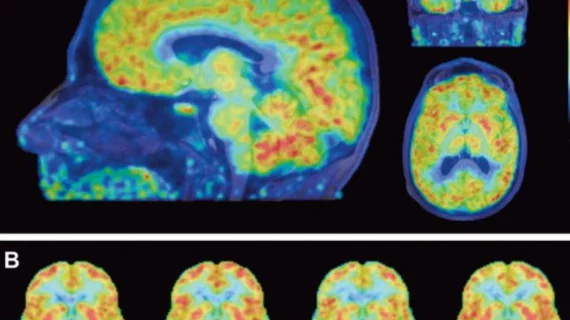Positron emission tomography brain imaging is at a crucial junction, and the field must move toward collaboration and embrace image and data sharing if researchers want to move forward.
That was the argument from a group of nuclear imaging experts put forth in a letter to the editor published in February’s European Journal of Nuclear Medicine and Molecular Imaging. The field, they wrote, has already picked much of the “low-hanging fruit” that is radiotracer research. Future breakthroughs will require smaller studies and larger sample sizes only attainable through multi-institutional data sharing.
The PET brain imaging field is “now at a crossroads,” Granville James Matheson, with Karolinska Institutet and Stockholm County in Sweden and colleagues wrote. “If we instead continue to use small sample sizes to search for subtle true effects, we run the risk of fooling ourselves into seeing ‘patterns’ in what is really noise, leading to reporting of spurious effects,” they added.
Matheson and his team pointed toward genetic research in the early 2000s as an example of how their own field could progress. After the specialty proved nearly all of its studies—which had sought an individual gene breakthrough—to be incorrect, clinicians responded by banding together and yielding multi-center sample sizes up to tens of thousands. Today, the field is producing “robust” scientific results.
Individual PET research centers have tried to overcome the high costs and technical difficulties associated with obtaining large sample sizes by using meta-analysis. This is typically the go-to when research samples are lacking, but limitations-related bias often plague such endeavors.
Instead, centers should use separate data points collected by single institutions, the team wrote. And using data in its rawest form is even better and can ensure a more “homogenous” analysis. Matheson et al. suggested sharing such information via centralized analysis or using reproducible, open-source tools to script and run identical procedures.
This will come with challenges of course, the group noted. More researchers will likely reveal dissenting opinions. And raw image data sharing will always come face-to-face with regulatory bodies.
But clinical PET has already impacted so many areas of research, the authors wrote, and can answer even more questions regarding Parkinson’s, schizophrenia and other challenges.
“Will we continue to work solely within individual research centers, using small samples to yield incomplete, or even misleading, results from confirmatory studies; or will we make the transition to multi-center collaboration and data sharing as exemplified by the genetics community?” the group asked.
“We hope for the latter, sooner rather than later, in order to ensure the continued success of PET research in driving our understanding of the biochemical basis of brain function and dysfunction,” they concluded.

